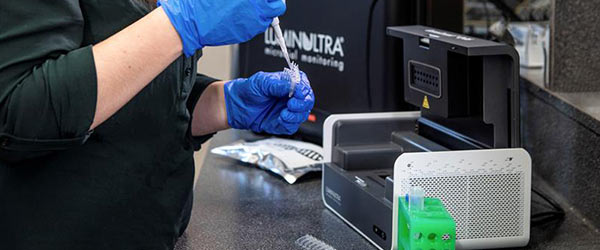(Halifax, NS) Researchers across Nova Scotia are launching a project aimed at detecting the presence of the virus that causes COVID-19 in human wastewater, helping to identify the potential presence of the virus quickly and before it can spread.
Building on the recent results of a pilot study, the research team has begun to collect samples in locations throughout the province. Locations have been selected by the research team in conjunction with provincial public health officials and the Nova Scotia Health Authority (NSHA).
“Together we are working to develop a wastewater surveillance program on a provincial scale that will provide early and accurate detection of SARS-CoV-2, which could ultimately enable proactive and preventative COVID-19 health and economic response measures,” says lead researcher Dr. Graham Gagnon of Dalhousie University.
Although COVID-19 is a respiratory illness, the genetic material of the virus that causes COVID-19 has been found in human wastewater. This virus — SARS-CoV-2 — survives longer in the gastrointestinal tract than in the respiratory tract. As such, wastewater may be used to determine the presence of the virus either before someone develops symptoms, receives a positive test result or is an asymptomatic carrier of the virus.
Research Nova Scotia (RNS) convened the research team to help shape the direction, scope and scale of this project, one of 19 COVID-related research projects funded by RNS since March. The project cost is estimated at $852,000 and includes staff, equipment, travel, materials and testing. Provincial funding for the project has been allocated from the initial $50-million contribution to the Nova Scotia COVID-19 Response Council.
“This research project was driven by the need to develop early COVID detection systems,” says Stefan Leslie, CEO of Research Nova Scotia. “As a funder and partner, we were pleased to work with some of the province’s leading researchers to help shape this project for the broadest possible benefit to Nova Scotians.”
Lead researchers, Dr. Gagnon and Dr. Amina Stoddart of Dalhousie University, are joined by co-investigators at Halifax Water, Acadia University, Cape Breton University and St. Francis Xavier University. The 18-member project team includes other scientists, researchers, graduate research assistants and students. The technology used is LuminUltra’s COVID-19 wastewater testing solution, which was developed in partnership with Dalhousie University.
“At LuminUltra we have worked to make this early-warning surveillance technology available to as many communities as possible. It is great to see this expansion of wastewater testing into more locations throughout Nova Scotia.”
– Pat Whalen, CEO of LuminUltra
Quick Facts:
- Wastewater sample collection will take place in Halifax, Dartmouth, Wolfville, and other municipal sites through to July 2021
- Confirmed locations include an essential worker building on Halifax Stanfield property and municipal wastewater treatment facilities. Sites will also include three locations to be selected in conjunction with Public Health and NSHA. Locations could include campuses and student residences at Dalhousie, Acadia, St. FX and CBU universities
- Project updates will be provided through the project, with a final research project report expected in November 2021
- Research Nova Scotia is the eligible recipient of NSCRC funds not used for programming, such as the Small Business Impact Grants and Workers’ Emergency Bridge
Resources:
- Podcast: Testing the Wastewaters: Researchers Develop a Fast and Effective Method for Detecting SARS-CoV-2
- For more information on Research Nova Scotia’s support of COVID-19 research projects, visit researchns.ca/COVID-19.
Media contact
media@luminultra.com
Research Nova Scotia
Stephanie Reid
Director, Marketing & Communications
902.223.9450
stephanie.reid@researchns.ca
Dalhousie University
Alison Auld
Senior Research Reporter
902-220-0491
alison.auld@dal.ca
About Research Nova Scotia
Research Nova Scotia is an independent, not-for-profit corporation with the mandate to support, organize and co-ordinate the funding of research in Nova Scotia. RNS was established to enhance research capacity, as well as align research funding, with provincial priorities and promotes a mission-oriented research ecosystem to help solve Nova Scotia’s biggest challenges.
About Dalhousie University
Dalhousie University is Atlantic Canada’s leading research-intensive university. Located in the heart of Halifax, Nova Scotia, with an Agricultural Campus in Truro/Bible Hill, Dalhousie is a truly national and international university, with more than half of the university’s 20,000-plus students coming from outside the province. Dal’s 6,000 faculty and staff foster a diverse, purpose-driven community, one that spans 13 faculties and conducts more than $181 million in research annually. Part of a cluster identified as one of the world’s top international centres in ocean research, the university proudly celebrated its 200th anniversary in 2018.









